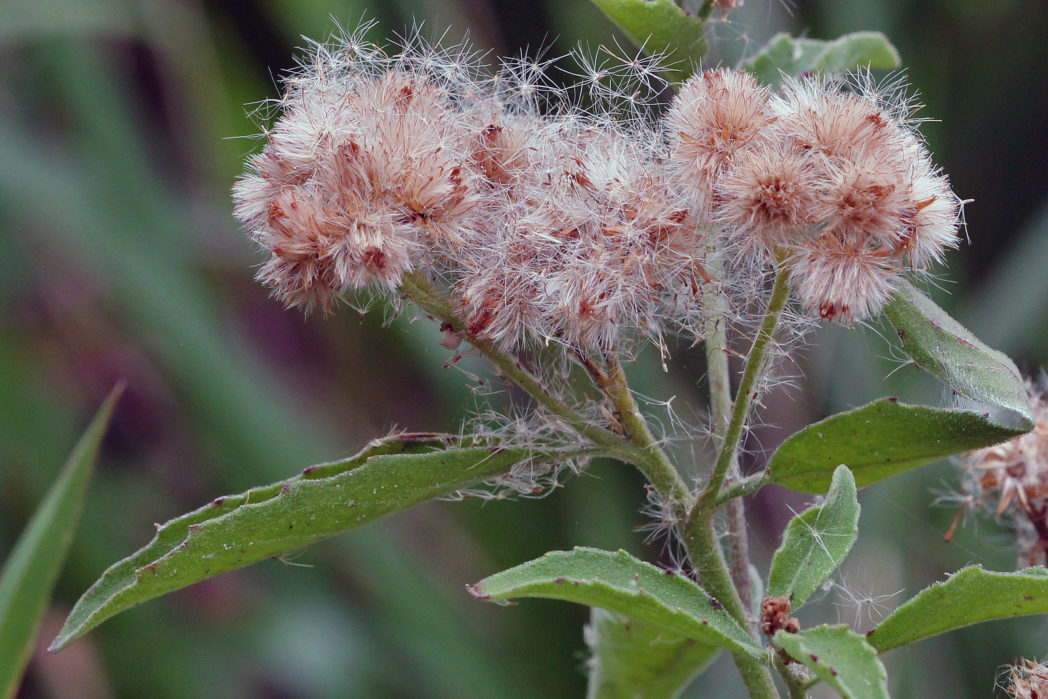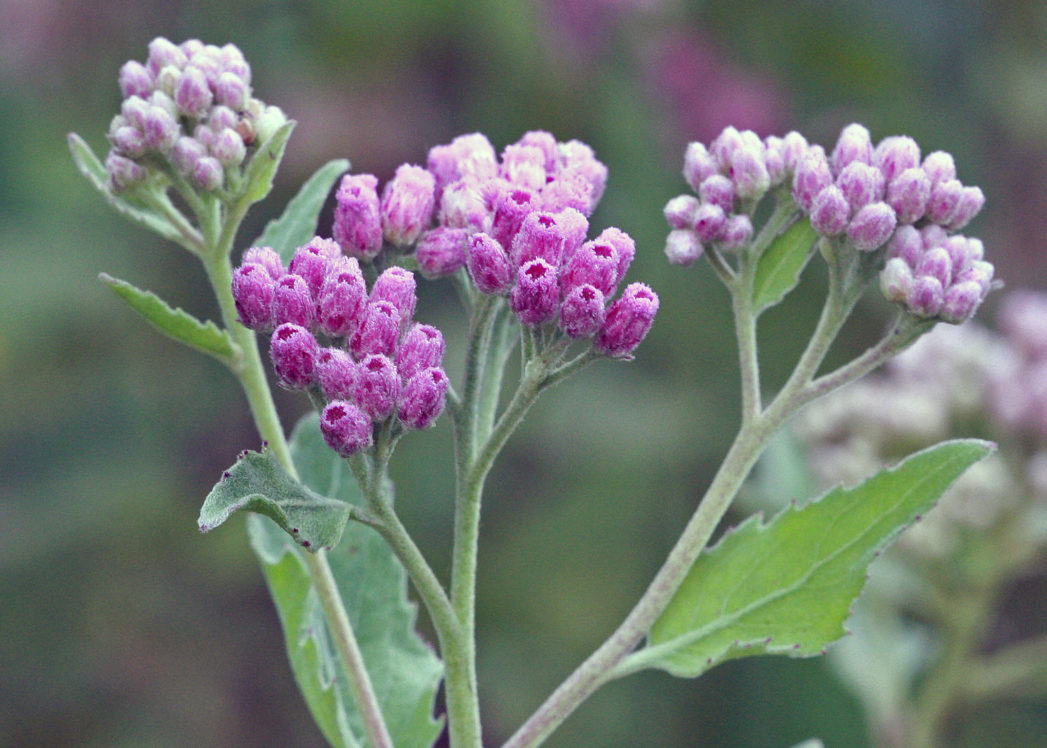Sweetscent
Pictured above: Sweetscent (Pluchea odorata) by Mary Keim. Click on terms for botanical definitions. View post as a PDF.
Known by many names such as Camphorweed, Stinkweed, Salt marsh fleabane, Sourbush and Cattle-tongue, Sweetscent (Pluchea odorata) is a short-lived perennial wildflower that occurs naturally in freshwater and salt marshes, swamps and coastal hammocks throughout Florida. It typically blooms summer through fall. Its sweet-smelling leaves and flowers are very attractive to butterflies. Bees love this plant, too.
Sweetscent’s somewhat showy inflorescence is a dense, flat-topped cyme of rosy pink blooms. Individual flowers lack ray florets. Leaves are ovate to lanceolate with toothed margins and rough surfaces. They are alternately arranged. The fruit is an inconspicuous achene tipped with a pappus.
A medicinal tea made from Sweetscent leaves is widely consumed in the Caribbean. The tea has stimulant, diuretic and antispasmodic properties.

Family: Asteraceae (Aster, composite or daisy family)
Native range: Nearly throughout
To see where natural populations of Sweetscent have been vouchered, visit florida.plantatlas.usf.edu.
Hardiness: Zones 8A–11
Soil: Moist to wet, moderately well-drained to periodically inundated sandy, calcareous or organic soils
Exposure: Full sun
Growth habit: up to 4’ tall
Propagation: Seed
Garden tips: Sweetscent is rarely cultivated, but it is easy to propagate from seed. It can grow in nutrient poor soil and is moderately salt tolerant, but not drought tolerant. It can be weedy and is best used in a naturalistic landscape or habitat restoration.

